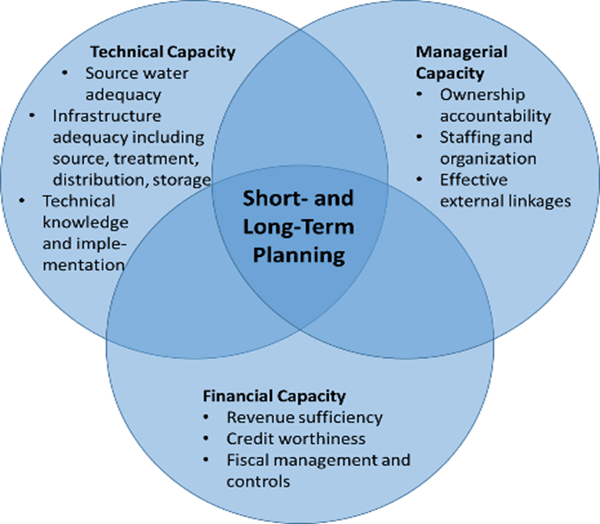Capacity Development
The Capacity Development Program was created under the Safe Drinking Water Act (SDWA) Amendments of 1996. Capacity Development is a process for public water systems to acquire and maintain the capacity (or capability) to consistently provide safe drinking water now and long into the future. There are three components of capacity development: technical, managerial, and financial. The Division of Water evaluates drinking water systems across the state based on these three components during a process called the Sanitary Survey. Sanitary Surveys are conducted every 3 years for Community Water Systems and every 5 years for Non-community Water Systems.

www.epa.gov
In this context, capacity means the capability, adequacy, and competency of a drinking water system to supply safe drinking water now and into the distant future.
The Capacity Development Strategy has been revised according to requirements of America’s Water Infrastructure Act of 2018 and the Bipartisan Infrastructure Law, based on recommendations made by the Kentucky Drinking Water Advisory Workgroup.